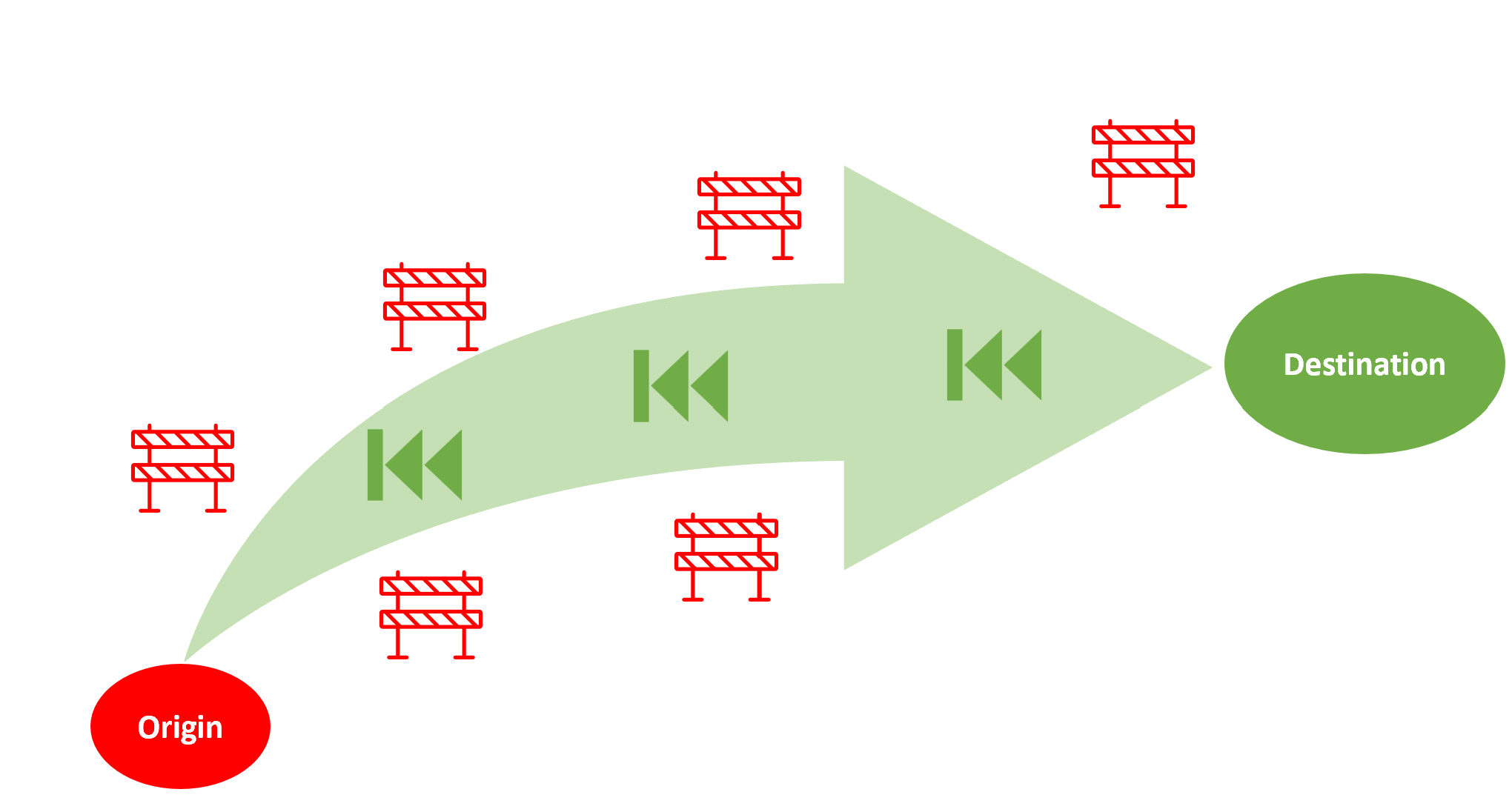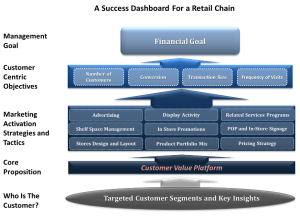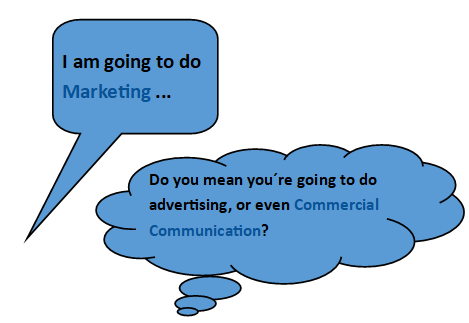by Paul Garrison

Most businesses are looking at the future based on what has happened in the past
Whether it is top-down, bottom-up, or someplace in between, it is typical to start the business planning process by establishing objectives based on the previous year’s results. Most senior managers see these historical performance numbers as a baseline to target future growth. The resulting growth target may vary, but the underlying fact is that most businesses are looking at the future based on what has happened in the past.
During the planning process, as line managers go through their individual operating plans, budgets, and resources to modify each of the various components that made up last year’s business plans, they adjust these to the new growth number. The problem is, that if you start with this mindset, and what can be done is based upon what has already been accomplished in the past, then this is probably as good as it is going to get. Where you go becomes self-limited by where you have been.
What businesses are finally waking up to, is that sustainable growth in profits, and, correspondingly, in increased shareholder value, can be achieved only by creating sustainable growth in the business itself – top line customer driven sales growth. That is what destination planning will help you get done.
You need to start with the end point – the place where you ultimately want to be. Define your success. Start with where you ultimately want to be, and then look back from that end-point to establish the critical gaps between there and where you are today. I am not talking about a destination that looks like a mission statement you hang on the wall, but rather a clear model of what real success would look like if you could only make it so.
Destination planning is a process of looking into the future and then integrating some basic forecasting and planning elements that will produce a clear and concise model of where you want to be, and what it takes to get there – a success dashboard.

Unless you are looking at customer value and integrating it into your key activities to drive your business objectives, you are going to find it much more difficult to achieve your goal
With a one-look dashboard, you can establish the relationship between customer value and the key strategies and business objectives that will lead to your ultimate goal – all on a single page. In the success dashboard, these inter-related elements – the goal, customer centric objectives, marketing activation strategies and tactics based on a customer value platform that is supported by key customer insights – may seem obvious, and you may feel like you already know and are focused on all these drivers of business success. But are you really? And are they integrated into a single ‘success dashboard’ that everyone in the organization can see and understand? The important thing is how effectively you can integrate all of them to define success. Each element necessarily must be inter-related with the others, which gets us to the fundamental point – unless you are looking at customer value and integrating it into your key activities to drive your business objectives, you are going to find it much more difficult to achieve your goal.
What the CEO and the CFO will like about this destination planning model is that it gets the marketing guys to focus on measurable business objectives – something that they think the marketing guys should have been focusing on all along. Good point. Coming from another perspective, the marketing department that will see this as an effective process to get the rest of the organization to focus on driving customer value – something that they think everyone should have been focusing on all along. Also a good point. The reality is that both perspectives are correct and serve to emphasize why customer value (as the key driver of business growth) needs to be understood and integrated into core business objectives and goals.
The Overall Business Goal
The steps in developing the destination model are important. The first thing that needs to be done is to plant the flag on the single business goal that will best drive shareholder value. A relatively aggressive number in this instance is critical because it will force the organization to the conclusion that they will never get there with ‘business as usual’. You can argue that to focus on just one number, or one goal, is an over-simplification of a complex business, but I would counter that it is through the goal’s focus and clarity that it becomes effective at rallying the organization – much like a flag that must be seen by all of the troops on the battlefield. Something clear and to the point is best such as, double the business by 2014, or achieves 50 million in profit by 2012!
So, how far should you go? The metaphor is that you need to stretch the rubber band without breaking it. When I say transform your business, I am talking about leveraging your core competence as a business to establish an enhanced value platform that will drive renewed growth. Find a way to do what already you do better than anyone else has ever done before to create a stronger customer value platform that will speed you toward your goal.
Any significant growth in your business will necessarily have to be built upon a stronger customer value platform
Customer Value Platform
What do your customers need to think and feel about your products, brands and perhaps the company itself in order for them to make the purchase and re-purchase decisions required for you to achieve specific customer centric objectives. Any significant growth in your business will necessarily have to be built upon this stronger value platform. Dig into the evolving needs of your own customers. What value would you need to provide in order to acquire new customers?
Customer Centric Business Objectives
To complete your success dashboard and thereby define your destination, your customer value platform can be extended to anticipated customer objectives. These objectives are the 3-5 measurements that must be achieved to reach the goal. And if you have chosen the most important objectives that most impact the overall sales and profit performance of the business, than naturally achieving these objectives would result in reaching an overall profit goal. This linkage will go a long way to getting you to where you really want to be – a customer value driven business.
Marketing Activation Strategies and Tactics
These are the primary activities you will do to communicate and deliver on the customer value platform you have established in order to achieve the desired customer centric objectives. In a complicated business it is probably impossible to have everything you do inside and outside the selling environment focused on the right customers, delivering on exactly the right services and product benefits, and then creating the appropriate communications that deliver the right message to the right customers at the right time and place. But how close can you get if you are not clear about what impacts what, why and how?
Give destination planning and it accompanying success dashboard a try. Later on, you may wonder how you ever got along without it.
By Paul Garrison, Founding Partner, Garrison Group (Garrison Group: Human-Centric Marketing (garrisonmarketinggroup.com).
As marketers we like to believe we are consumer centric in everything we do, but the reality is that we often get lost in processes, tools, and procedures that are more internally focused on who we are as an organization, what we are doing, and what we want to do rather than externally focused on […]
The confusion between “doing marketing” and “engaging in commercial communication” often stems from a partial or simplified understanding of marketing, which can have negative consequences on a company’s sales. Marketing encompasses everything a company or organization does to get more people to buy or support its value proposition more frequently, for a higher exchange value […]
With almost 25% participation in life, all life, and consequently in purchases, all purchases in this country (Spain), those over 65 years of age could, legitimately, initiate a massive protest action against advertising, that is, against advertisers, agencies and media, because of the fondness of treating us mostly as if we were mentally retarded. nerd-sentimental […]
Character is at the core of who we are as individuals and as a society; it’s the foundation of human behavior.






